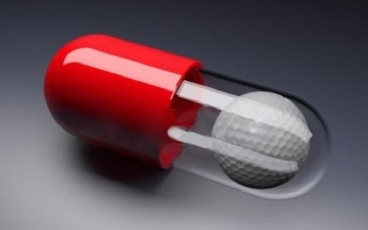We all know that strike quality is one of the defining traits of a good golfer – all the professionals are great strikers of the ball.
Also, from my testing, we have seen that striking the ground too far behind the ball can be devastating to your game, and is likely the number one source of improvement for the average golfer.
However, the common “fix” for poor ground contact might be causing more problems in the long term.
Fat Shots
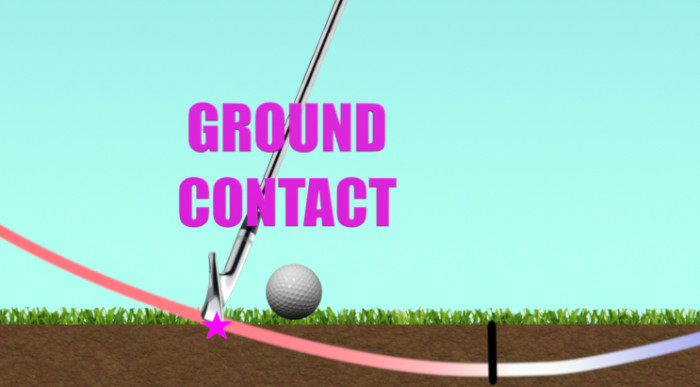 If you have ever hit a fat shot before, you’ll know how much of a game-wrecker it can be.
If you have ever hit a fat shot before, you’ll know how much of a game-wrecker it can be.
We hit the ground early, take a huge chunk of turf and the ball goes nowhere. But how do we fix it?
Common wisdom in the golf industry (even among most teaching professionals) is to simply shift the low point more ahead of the ball – towards the target.
In the above picture, the low point (black line) is in front of the ball, but the ground contact (purple star) is behind.
Most advice given to fix this issue is to shift the low point farther forwards (or to do things which move the low point forwards, such as more weight shift).
The Problem
The issue for many golfers is that their low-point may already be in front of the ball, as in our above example.
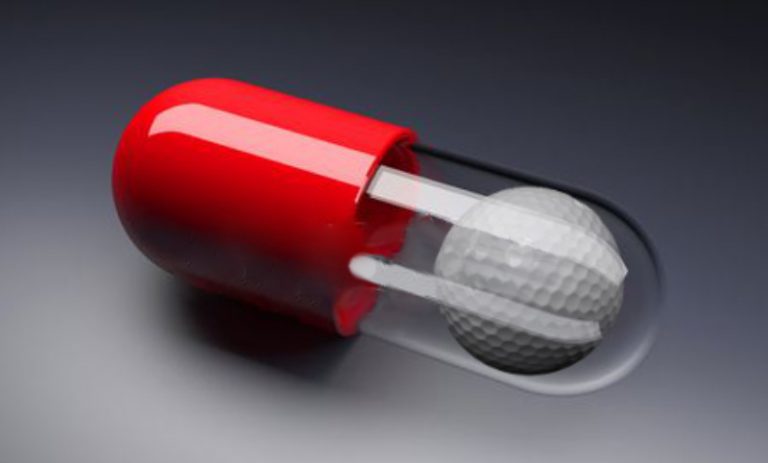 Why is this a problem? Well, shifting it farther in front can;
Why is this a problem? Well, shifting it farther in front can;
- Create a steeper angle of attack
- Encourage less dynamic loft – resulting in lower flying shots with less stopping power
- Reduce bounce on the club
- Create a smaller margin for error with ground contact
- Encourage the face to be more open to the target and the path (resulting in flares out to the right)
I know what you are thinking "All my golfing life I have been told I need to get my low point ahead of the golf ball”
This is true – to a certain extent. But, just like a pill, the right dosage is key – too much can kill you (or your golf game).
The Solution
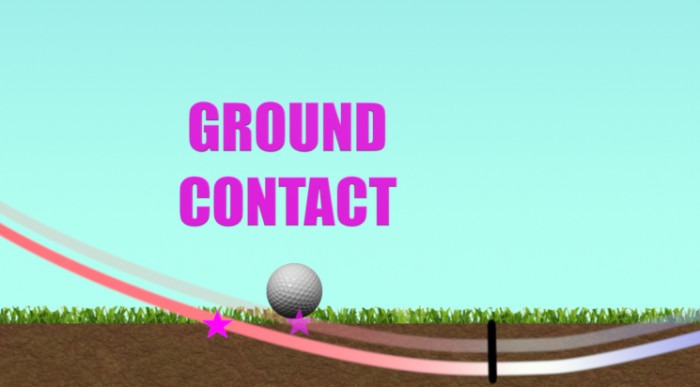 If you already have your low point in front of the ball (like most golfers who can hit a decent shot) but occasionally suffer with fat shots, changing your arc height/depth might be a better option.
If you already have your low point in front of the ball (like most golfers who can hit a decent shot) but occasionally suffer with fat shots, changing your arc height/depth might be a better option.
What is arc height/depth? Think of your swing as a hula hoop – how deep into the ground are you dropping that hula hoop?
This picture shows how, with the same low point, we can achieve different ground contacts depending on our arc depth.
The original fat shot (opaque) can be improved and turned into a functional ball/ground contact (semi-transparent line).
In The Strike Plan, I discuss how to change your arc height/depth, devoting an entire module to it.
There’s More
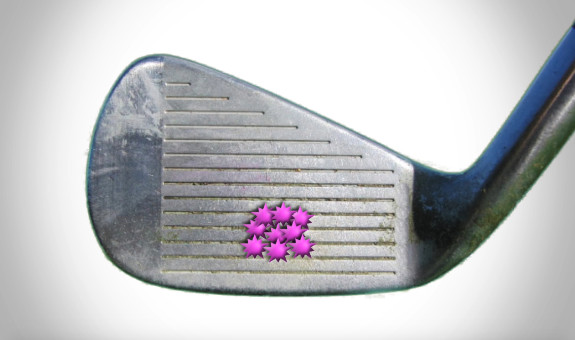 If we raise the arc height up dynamically through the swing (like most pros do), we can actually increase the width of the swing arc at the bottom of the swing.
If we raise the arc height up dynamically through the swing (like most pros do), we can actually increase the width of the swing arc at the bottom of the swing.
I know that was just a mouthful of words to you – what exactly does it mean? It means more consistency.
Not only do we strike the ground more effectively, but the club comes into impact at a more consistent height – improving strike quality and consistency of results.
With a wider swing arc, you are more likely to experience more consistent-height strikes on the face.
Again, this is something I devote a whole module to in The Strike Plan.

